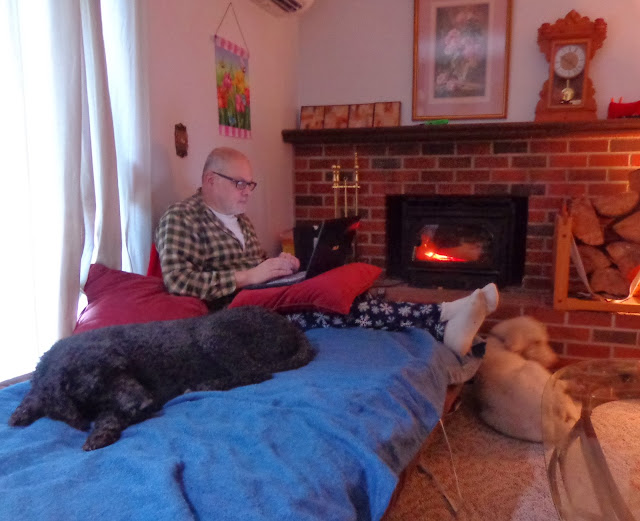 |
| Methley Plum. Digging it up. |
I thought it would be difficult to dig. It was easy. The move last year resulted in compact root system, not wide ranging. There was almost no root damage. The roots were about one shovel blade deep.
This was my usual method. Slice vertically in circle around tree. Scoop out a moat around tree, digging outside that sliced circle. Then slice under tree with shovel. No prying until I've fully sliced under the tree. It's easy this way, and not traumatic to the tree.
 |
| Transferred to a tarp. |
Those dog food bags have many uses in the garden. I never throw them away.
Then pick up using the tarp, not pulling on the trunk. Use wheelbarrow to move it to the truck. Then transfer into truck bed.
It's an overcast, wet day. Ground was soft. Not raining hard. Perfect for moving a tree.
 |
| Drove it to Battleground. On left is Helleborus. |
Almost in place. Hole is dug. I had a small jujube tree in this location. It's now moved to the bee garden near the other jujube. Those have been disappointing so far. Not much growth, still tiny. This is a good spot, close to the other plum trees. Before planting, I mixed a cup of lime with the back fill soil. I also added mycorrhizal inoculant. I don't think I will buy more of that. Probably not needed. But I have some left over so might as well use it.
 |
 |
| Covered with bird netting to deter deer. |
I don't have fencing to protect from deer, so I covered with bird netting. I sunk the posts into place a few weeks ago, anticipating this move.
Forgot to wrap the trunk to protect from chewing rodents. Other plum tree is not chewed, so it should be OK for the next day. I hope.



















